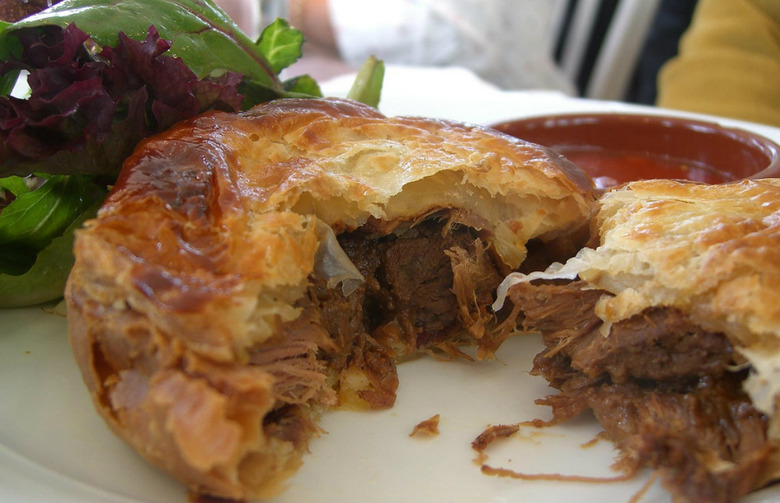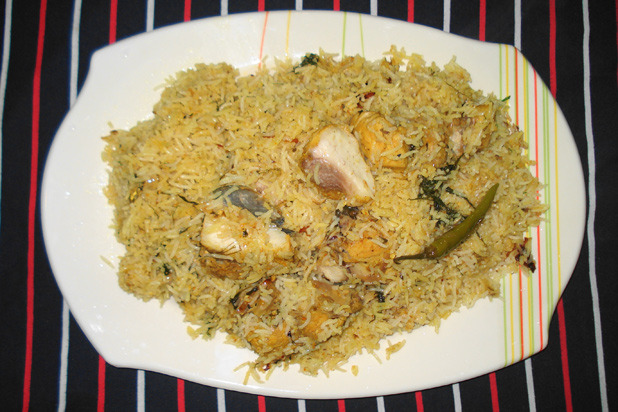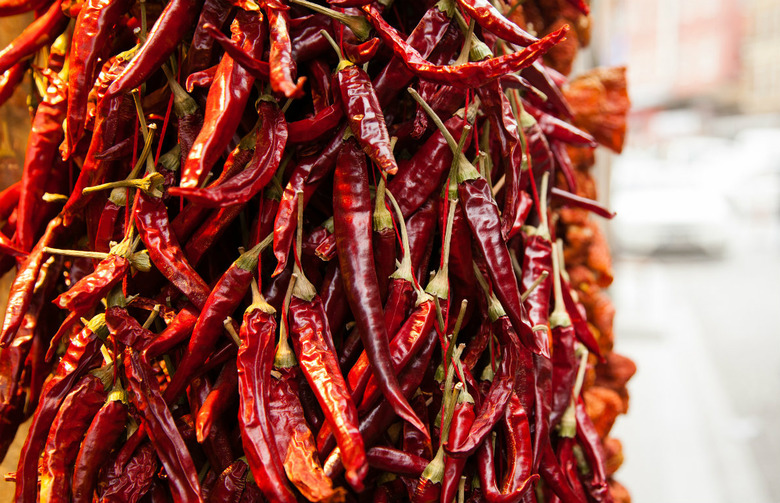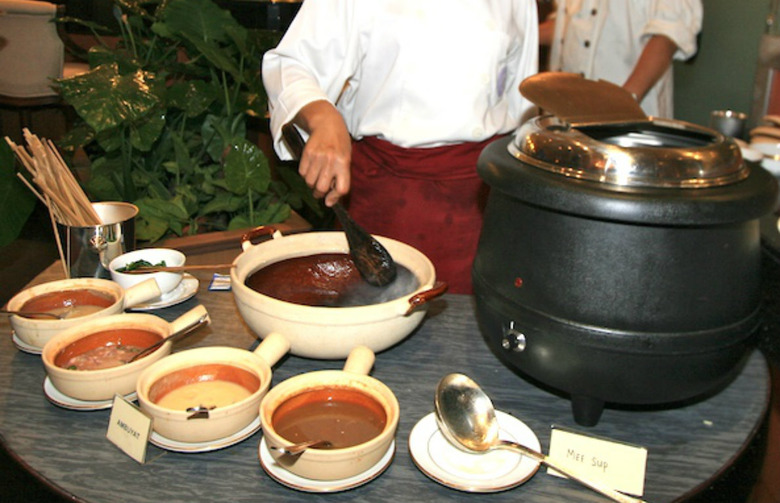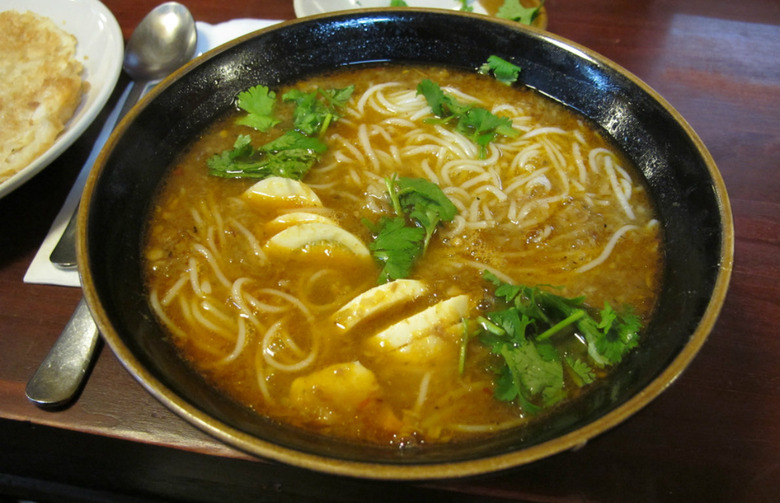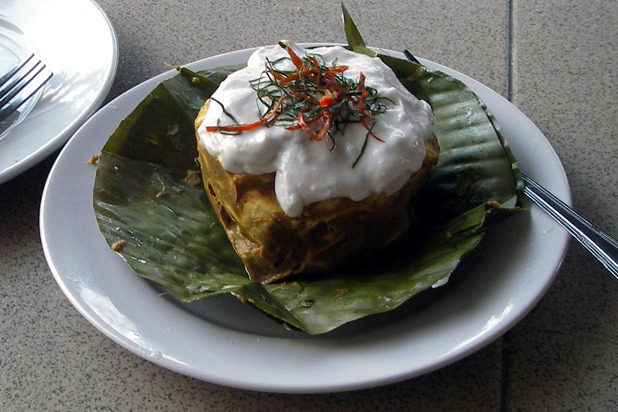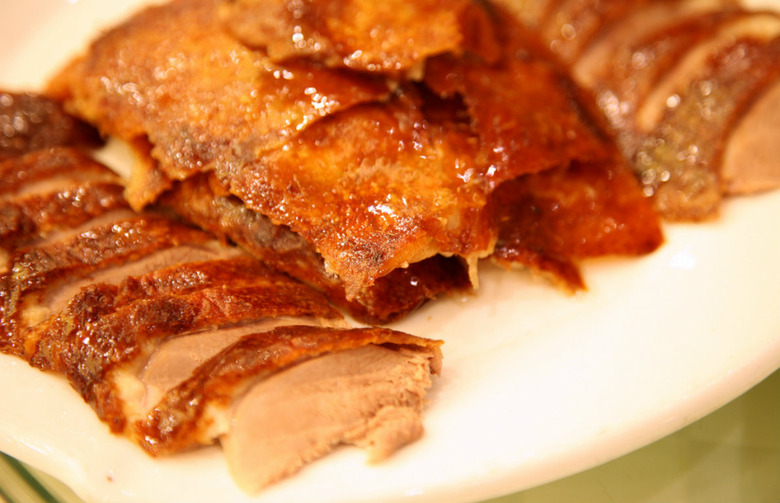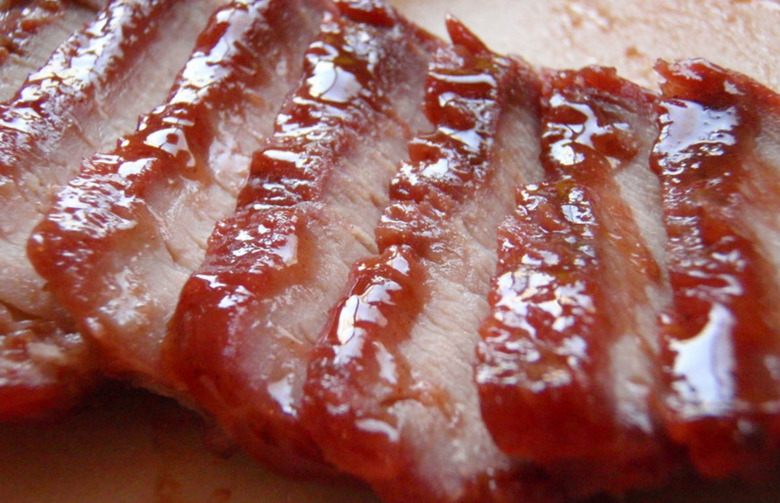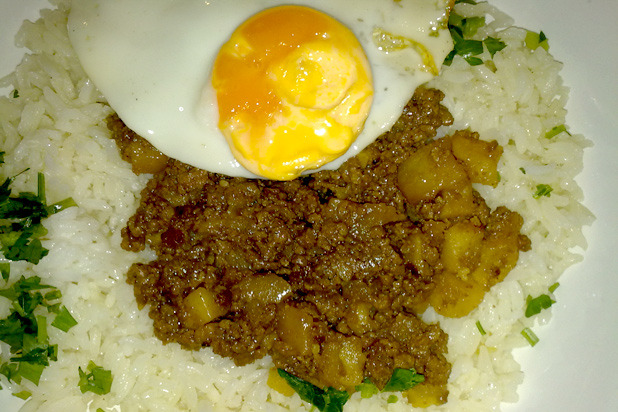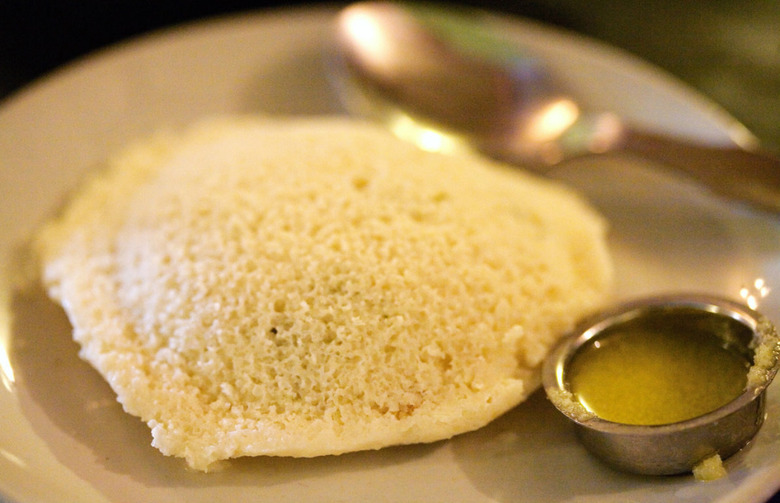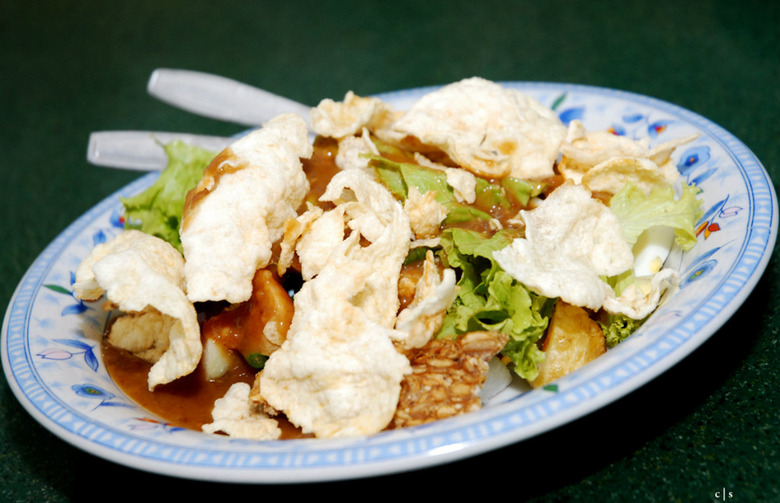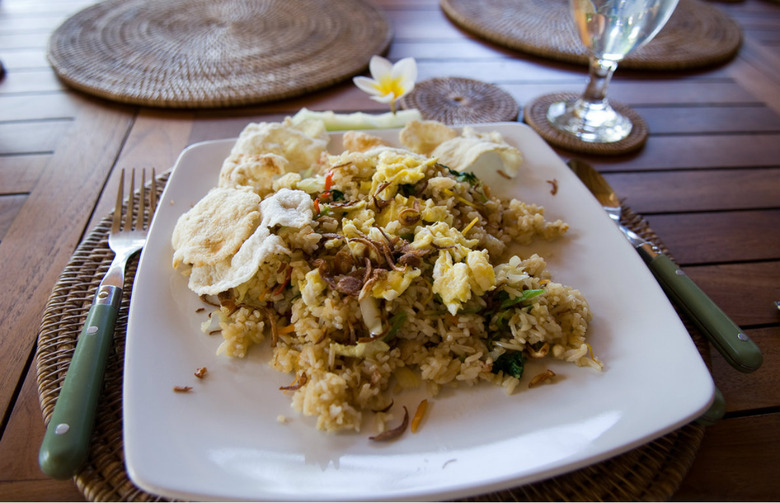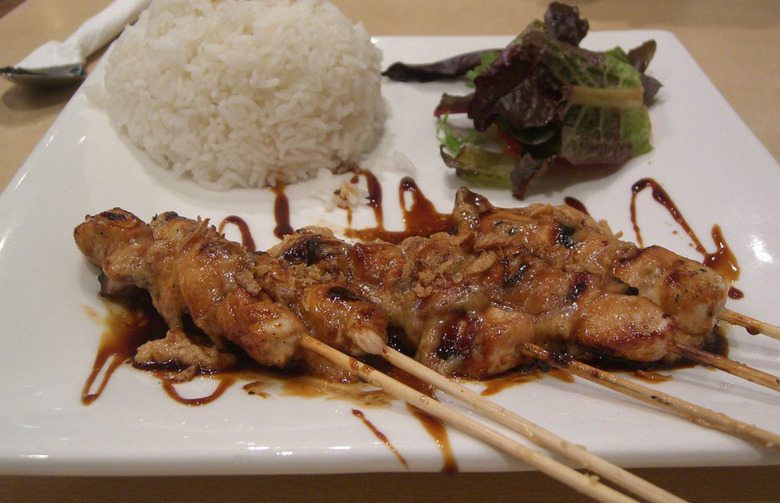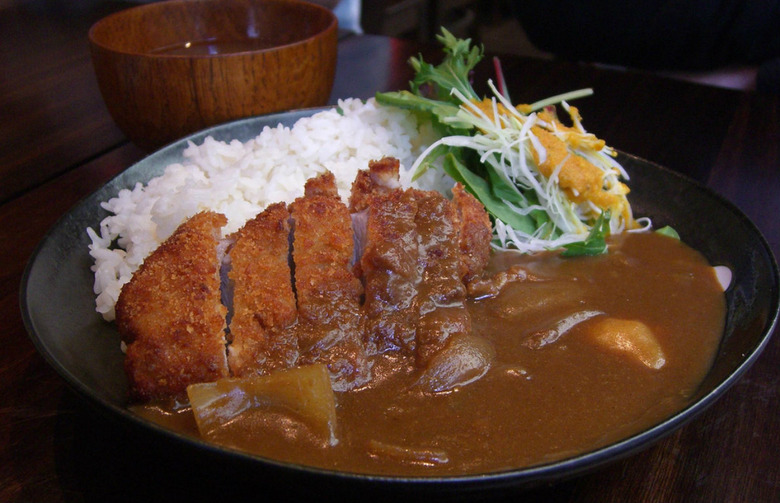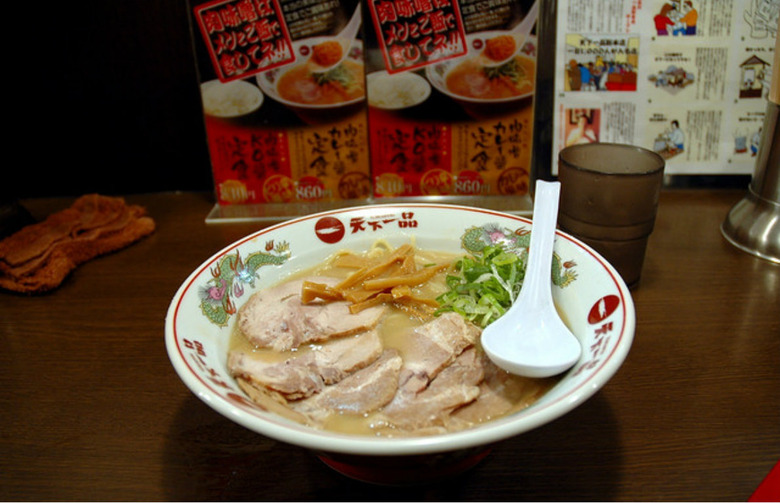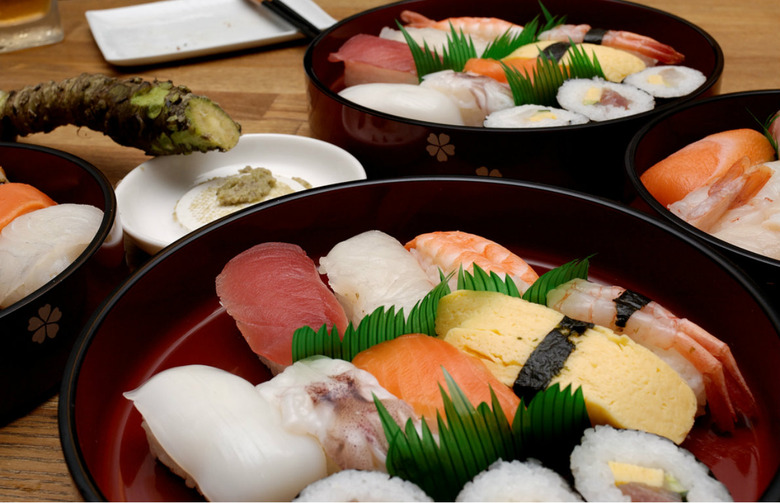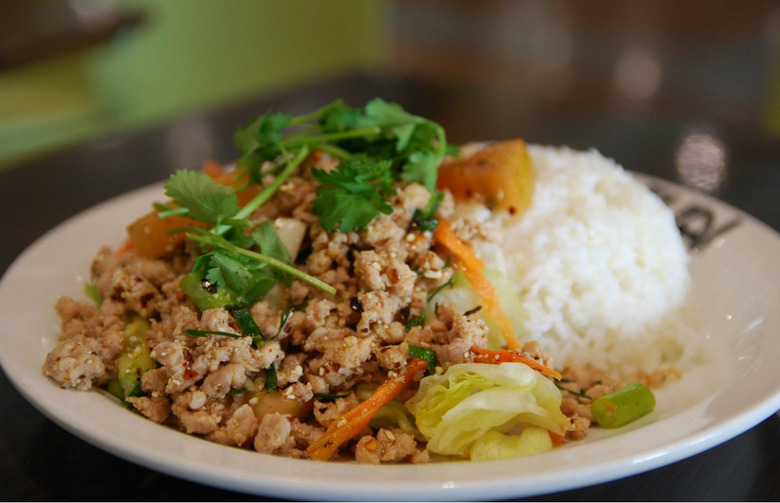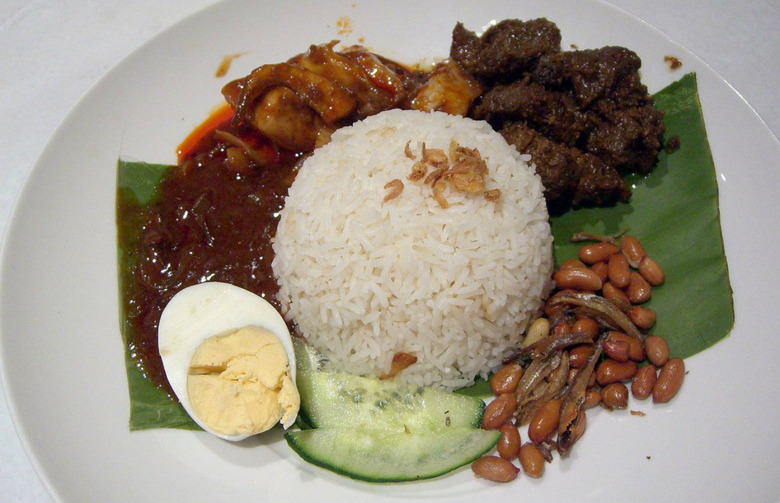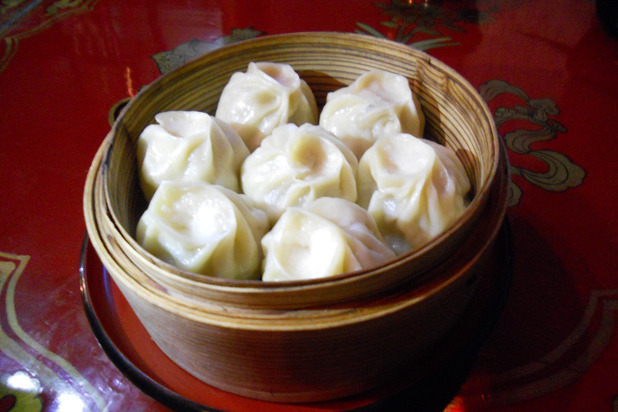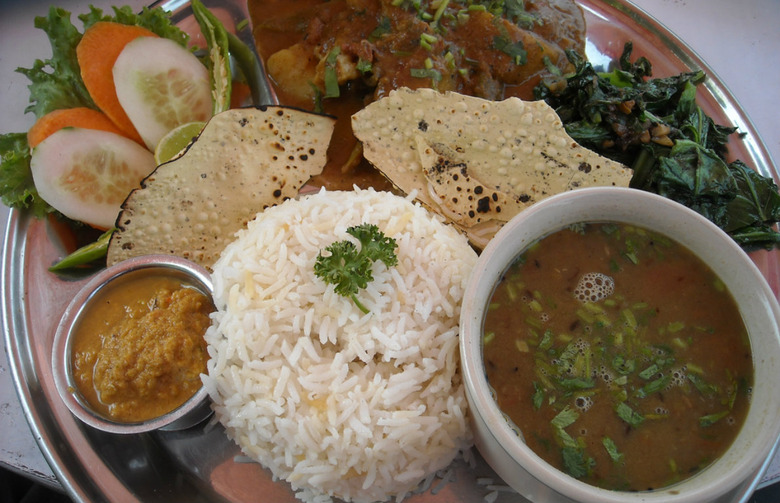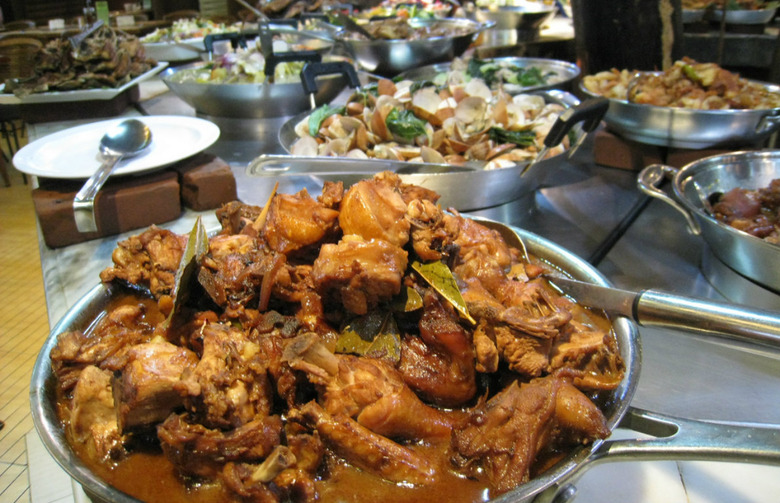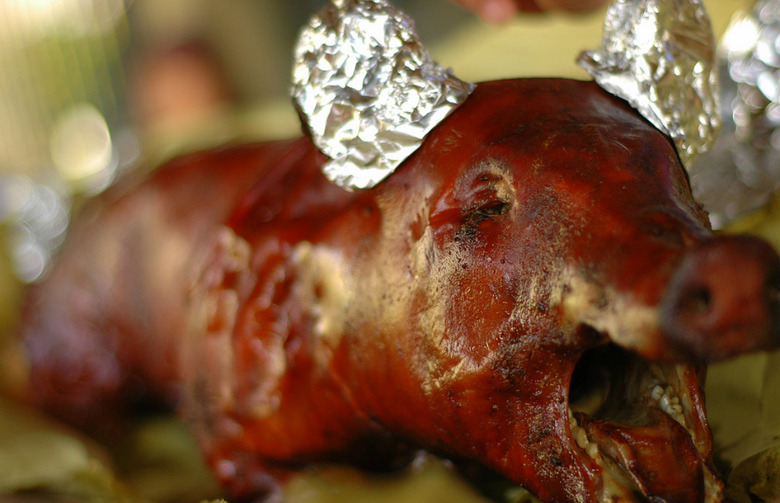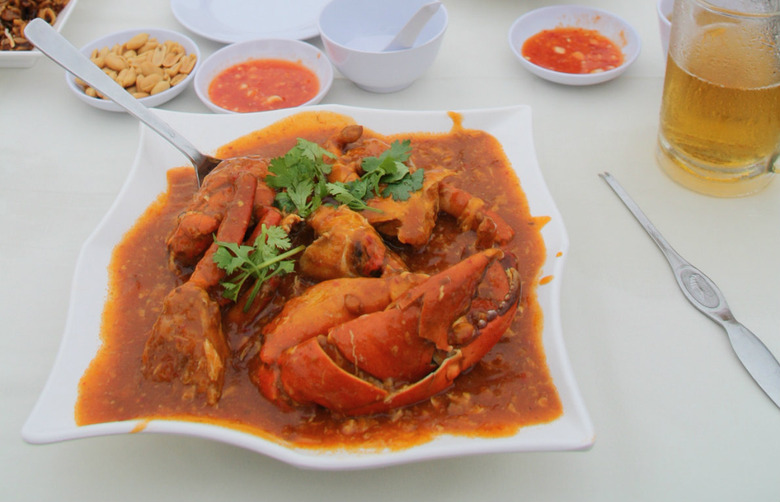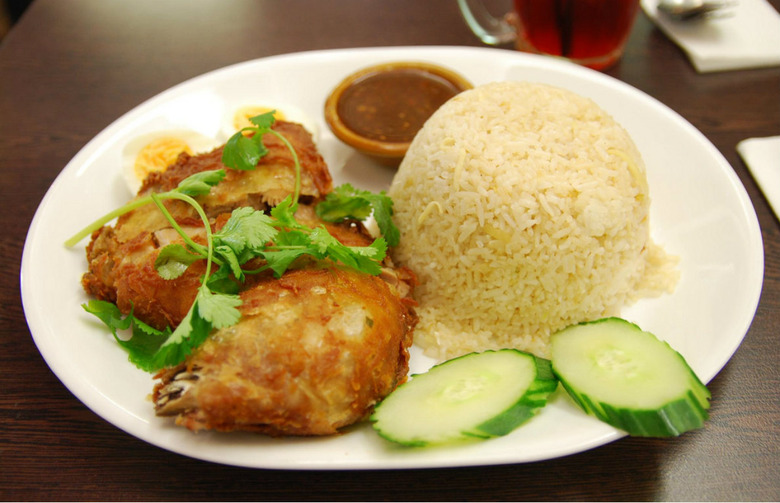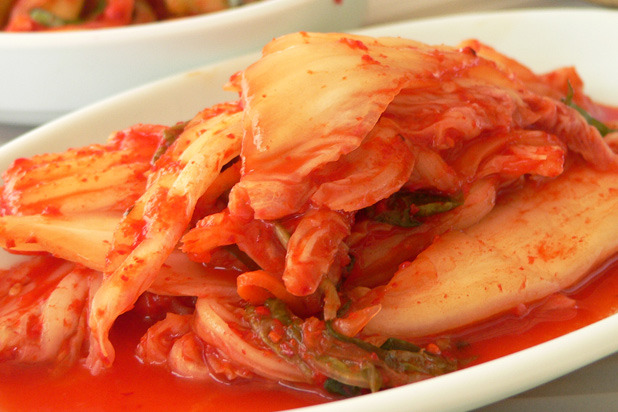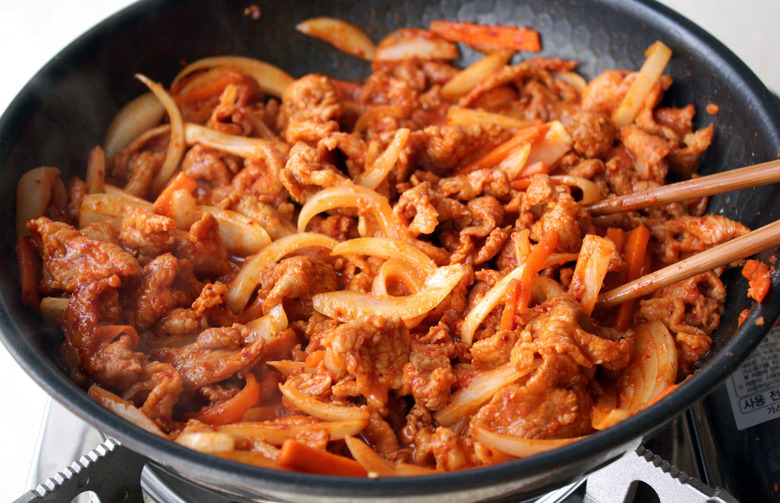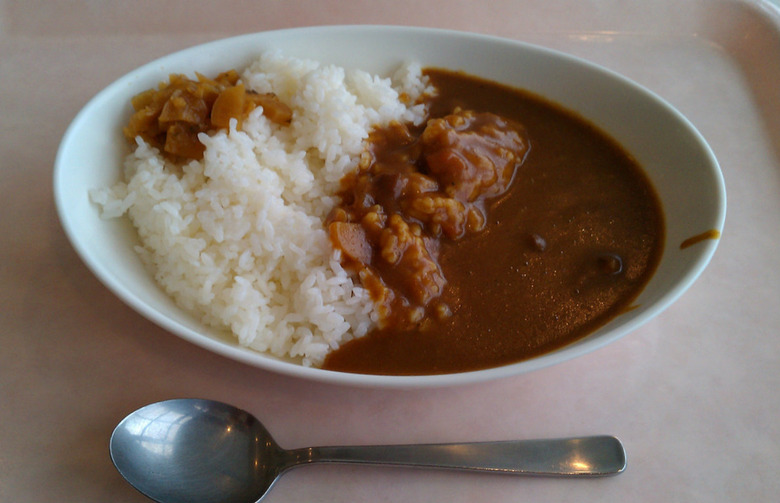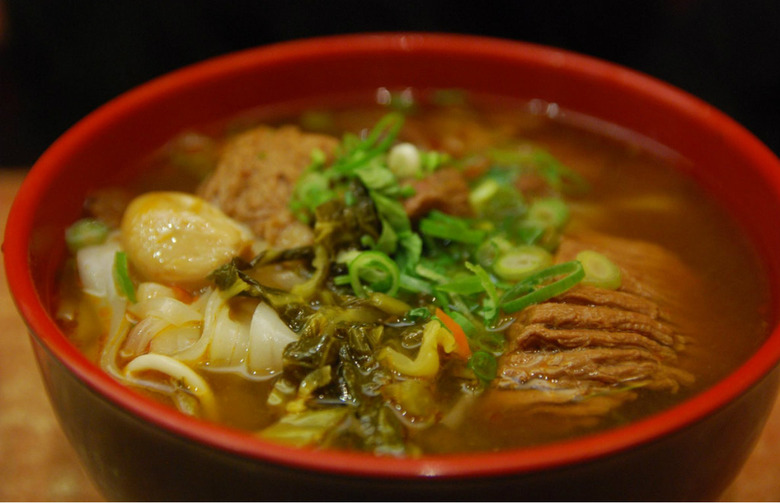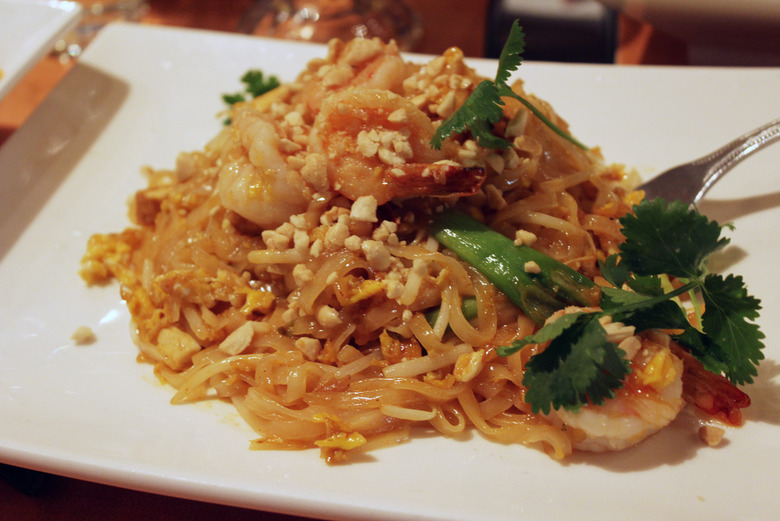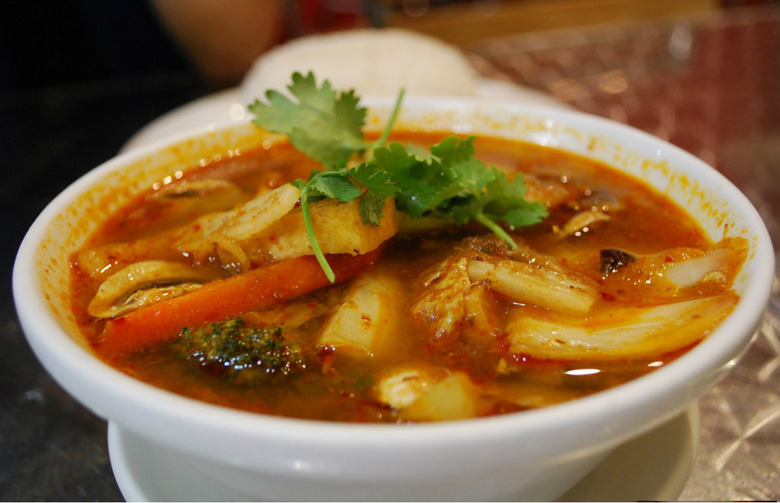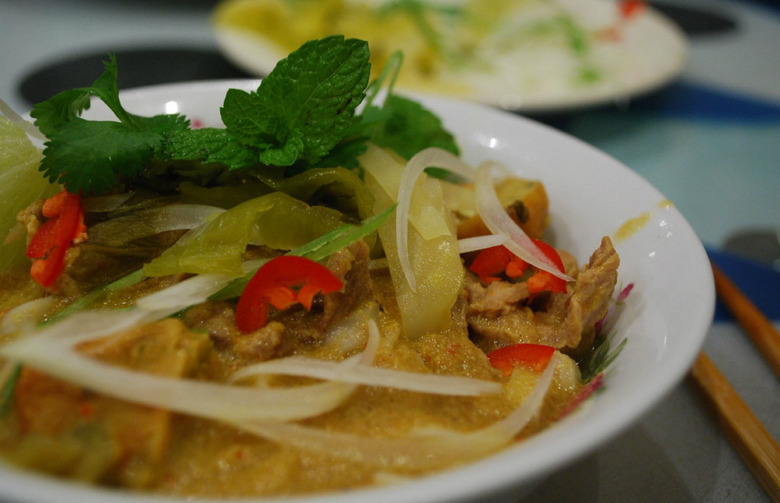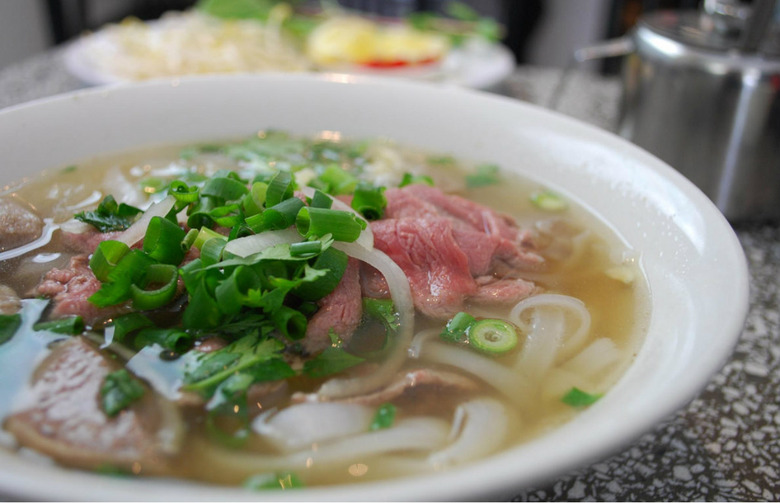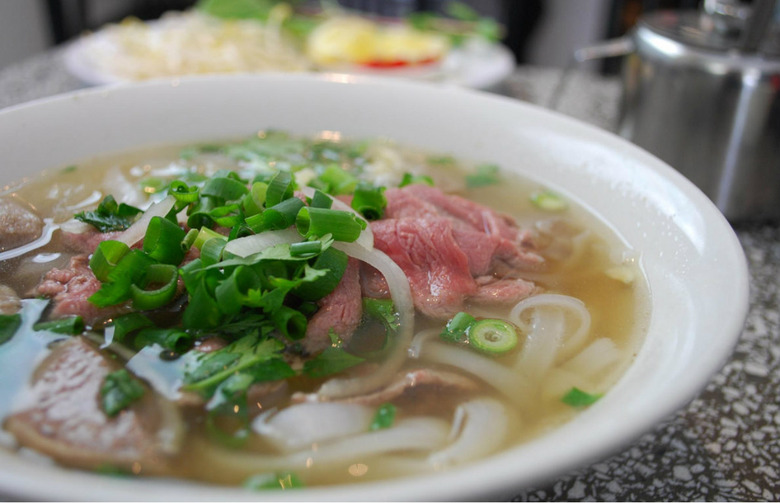150 Iconic Dishes Slideshow: Asia And The Pacific
The history of the meat pie dates back to Neolithic times, but you'd never know it at Sydney's iconic Harry's Café de Wheels. The outdoor stand with bright neon lights, a long line, and a menu with classic and new meat pie varieties, draws locals and visitors for flaky crusts and fillings like beef with peas and mash, and chicken and curry.
Bangladesh: Ilish Polau
Commonly served at family events like weddings, ilish polau (or pilaf), is seasoned rice with pieces of small ilish fish on top. This fish is in abundance in Bangladesh, where it can be smoked, steamed, or baked alongside mustard seeds, chiles, ginger, turmeric, and other spices. One of the best places to try it is Kasturi in Dhaka.
Bhutan: Ema Datshi
Ema datshi is served hot, spicy, and cheesy, made with chile peppers, cheese, and cayenne pepper and served with herbed rice. One noteworthy restaurant in Bhutan is Plums Café, in Thimphu, where locals and visitors find traditional ema dashi and other Bhutanese dishes.
Brunei: Ambuyat
Sticky, starchy, and with the color and consistency of thick paste, ambuyat is a nearly flavorless Bruneian specialty made from the pith of sago palms. It's most commonly eaten with bamboo sticks (called candas) and dipped into a variety of sauces made of sour fruits. Order it at lunch like locals do at Aminah Arif restaurant in Kiulap.
Burma/Myanmar: Mohinga
Rice, noodles, and a fish broth come together in this classic Burmese dish that can be found on every street corner and in nearly every restaurant. It's often eaten for breakfast, though locals really don't discriminate about timing when it comes to mohinga. Head to Yangon (formerly Rangoon) for a bowl at Green Elephant.
Cambodia: Amok Trey
Amok trey is a steamed fish with coconut milk and many herbs and spices. It's often called a curry due to the saucy texture, not because of any curry powder in the mix. Some also call the dish a "parcel" because the fish is steamed in banana leaves after it's seasoned. While you can find amok trey in many Siem Reap restaurants, Khmer Kitchen is highly regarded as one of the best.
China: Peking Duck
Peking duck is a Chinese specialty known around the world, but it remains highly appreciated in its homeland, specifically in Beijing, where it was invented. Locals will argue over where to find the best version of this crispy duck served with pancakes and spring onions, and two of the best are found at Quanjude and Bianyifang, both in Beijing.
China: Hong Kong: Char Siu
In Hong Kong, most char siu restaurants hang various meat specialties in the window, showing off for passersby. Originally Cantonese, char siu is boldly flavored barbecued pork that's become a specialty in Hong Kong, and throughout Asia. Hong Kong's Joy Hing's Roasted Meat arguably serves the most famous plates of it.
China: Macau: Minchee
Also spelled minchi, this "fusion" of Portuguese and Macanese flavors consists of stir-fried ground pork with soy sauce and onions, topped with a fried egg. Macau's O Porto Interior should be any visitor's first stop for well-done local classics like minchee.
India: Idli
Indian food is very vegetarian friendly, and this dish is one of the most popular and iconic on offer. Idli is a Southern Indian lentil and rice pancake eaten at breakfast and as a snack food paired with chutney and spices. Sample these light snacks at Bangalore's Om Murugan Idli Shop.
India: Tandoori Chicken
Northern India is the home of tandoori, though it really is a national specialty. The tandoori is a type of oven used to cook flatbreads and typical meat dishes. Naan and tandoori chicken, which is marinated in yogurt and spices before cooking, are among the most common dishes made in this oven, though all the various options can be sampled at Bhukara in Delhi.
Indonesia: Gado-gado
There are many variations of gado-gado throughout Indonesia, but it is ultimately a vegetable salad with peanut sauce, hard-boiled eggs, and some kind of crunchy topping like fried tempeh or tempura pieces. One of Jakarta's best examples is served at Gado-Gado Boplo.
Indonesia: Nasi Goreng
Nasi goreng is basically Indonesian fried rice, which is most often enjoyed as flavorful street food topped with a sweet soy sauce, tamarind, chile peppers, egg, chicken, and shrimp. It's not clear when Indonesians customized classic Chinese fried rice, creating nasi goreng, but it's a local favorite. Try your first or fifth nasi goreng at the famous seaside La Lucciola in Seminyak.
Indonesia: Satay
The idea of satay began in Java, reportedly inspired by Arabic shawarma and Indian kebabs. It's a blank canvas for many kinds of meat, like beef, mutton, lamb, chicken, and, for non-Muslims, pork. It's been said that the best satay comes from street vendors, but you can try some of Bali's finest at Denpasar Traditional Market in Bali's capital.
Japan: Japanese Curry
Japanese curry, not to be confused with Indian curries, can be eaten for any meal and is served with rice, udon noodles, or bread. It's a thick vegetable-based sauce with meats from beef to deep-fried pork, and is found in every kitchen, whether at home or at restaurants like C&C Restaurant in Tokyo.
Japan: Ramen Noodles
One of the hottest debates in Tokyo continues to be about which ramen shop can be deemed the best. Ramen is a noodle dish served in a beef or fish broth with sliced pork and spring onions. Two of the most lauded shops in Tokyo are Ramen Tetsuya and Ippudo.
Japan: Sushi
Sushi has to be one of Japan's greatest exports (after cars and electronics). And it can be found everywhere in Japan, from street market stalls to its range of Michelin-starred restaurants. One of the most famous sushi restaurants is Ginza Kyubeiy in Tokyo, which opened in 1936, and a three-Michelin-starred option is the city's Sukiyabashi Jiro.
Laos: Larb with Sticky Rice
Larb is a term for a traditionally Laotian-style meat salad, most commonly cooked using pork, chicken, beef, or duck. It's then mixed with mint, chile peppers, and vegetables and served alongside a special ground toasted rice, as well as sticky rice. Sample it at one the most loved traditional restaurants in Vientiane, Makphet.
Malaysia: Nasi Lemak
One of the most important ingredients in nasi lemak is the pandan leaf that infuses the rice with flavor and an irresistible scent. The rice is cooked with coconut cream and is then topped with meat or fish. Madam Kwan Pavilion is known for its nasi lemak, and is one of Kuala Lumpur's best-known restaurants.
Mongolia: Buuz
This dish is an integral part of Mongolian history that lives on today in nearly every home kitchen and modern Mongolian restaurant in Ulaanbaatar, like Hishig Mongol 2. Buuz are minced meat dumplings (using beef or mutton), flavored with salt, garlic, onions, fennel, and other herbs.
Nepal: Dal Bhat
In Nepalese, "dal" means lentils, and "bhat" means rice, but those two ingredients are only the base of what makes up dal bhat. To be complete, the dish also needs potatoes, cauliflower, carrots, green beans, tomato, spinach, and other vegetables and herbs. It's then served with a crispy papadum-like cracker, and can be enjoyed at Kathmandu's The Third Eye Restaurant.
New Zealand: Pavlova
It wasn't until 2010 that the pavlova was officially (finally?) declared a New Zealand-born (not Australian) dessert. It's a light meringue dessert (named after Russian ballerina Anna Pavlova) topped with fresh fruits and cream. Locals find their favorite at the waterfront restaurant Euro in Auckland.
New Zealand: Bacon and Egg Pie
Found at many cafés throughout Auckland (and the rest of the country) for breakfast and lunch, bacon and egg pies are flaky crusts filled with bacon, egg, and sometimes cheese, onions, or other vegetables. One of the best in town is found at Little & Friday.
Philippines: Adobo
Not to be confused with Spanish adobo, which is a spiced marinade using paprika and other spices, Filipino adobo is meat or fish marinated in vinegar, garlic, oil, and spices. It's a long-cooking dish that's favored in home kitchens, and made superbly at such places as Adobo To' in Pasig City or The Aristocrat in Manila.
Philippines: Lechón
On an episode of No Reservations, Anthony Bourdain said that the lechón he tried in Manila was the best he'd ever had. Lechón is a whole suckling pig roasted over charcoal, creating succulent cuts and crispy skin. Because of the enormous effort of cooking lechón, it's most often seen at festivals and on special occasions, but one local favorite is found at Manila's General's Lechón.
Singapore: Chilli Crab
Spicy and delectable, chilli crab is sold on every street corner and in nearly every café in Singapore. It dates back only to the 1950s, when a local chef decided to stir-fry a mud crab in thick and sweet chile sauce. It's now one of the most popular foods in Singapore, available for finger-licking sampling from Long Beach Seafood.
Singapore: Hainanese Chicken Rice
Like chile crab, Hainanese chicken rice is ubiquitous; there are a number of eateries dedicated to serving only that. Originally Chinese, it's prepared a specific way in Singapore by boiling the entire chicken in a pork stock with garlic and ginger. Then, the rice is cooked with coconut milk and everything is topped with a spicy chile sauce. Sample some at Fook Seng GoldenHill Chicken Rice or Tian Tian Hainanese Chicken Rice.
South Korea: Kimchi
Kimchi is a healthy, bold, and traditional Korean condiment. It is made of thoroughly seasoned vegetables like cabbage, cucumber, and green onions that are fermented with a range of seasonings. The vegetables are then used in stews, fried rice, and soups. Head to Gwanghwamun Jip Kimchi Jjigae in Seoul for a taste.
South Korea: Bulgogi
Korean barbecue enthusiasts will be very familiar with this marinated, grilled lean beef preparation, whose name means "fire meat." The dish, which has long history in Korea, reportedly dating all the way back to 37 B.C., is served with rice and mixed vegetables. Bulgogi Brothers restaurant in Seoul has a strong handle on it.
Sri Lanka: Rice and Curry
This wildly popular dish in Sri Lanka starts off with a large bowl of rice, topped with spiced lentils, and a curry made up of meat, like chicken, fish, or lamb, and vegetables, like green beans. Though it has become a touristy must for visitors, it is said that its best eaten from roadside vendors; that said, the version at Palm Garden Guesthouse in Kandy proves delicious time and again.
Taiwan: Beef Noodle Soup
Consisting of stewed beef, broth, vegetables, and noodles, Taiwanese beef noodle soup is usually served alongside other plates of braised tofu and seaweed. It's so loved that there is an annual Beef Noodle Festival held in Taiwan, but when the festival ends, locals and visitors can get their fix at Yong Kang Beef Noodles in Taipei.
Thailand: Pad Thai
This dish, so easily found at Thai restaurants everywhere, dates back to ancient Siam, but became truly popular only around 1940. It's made of stir-fried noodles with eggs, fish sauce, seasoning, and meat or shrimp. If you're in Chiang Mai, the Weekend Market is the place to find it.
Thailand: Tom Yum Soup
Tom yum (or yam) soup is hot, spicy, and restorative, with flavors like lemongrass, kaffir lime, galangal, chile peppers, and fish sauce. It's made with vegetables, shrimp, and mushrooms. Try it for yourself at Bo.lan in Bangkok's Sukhumvit neighborhood.
Thailand: Khao Soi
Khao soi is a salty noodle soup made with fried noodles, spicy coconut curry, and served with slices of lime and chile paste. It's originally Chinese, and was introduced to the Thai diet by immigrants, though it has been customized since then. Though you'll find it just about everywhere, one highly recommended hole in the wall is Khao Soi Khun Yai's or Kao Soy Nimman, both in Chiang Mai.
Vietnam: Pho
The quintessential noodle soup is called pho in Vietnam. Start off with rice noodles, seasoned with lime and mint, which are then topped off with sliced beef or chicken. Slurp up some of the best at Pho Hung in Ho Chi Minh City.
150 Iconic Dishes from Around the World
Originally published on February 6, 2012.
See the rest of the world's 150 iconic dishes...
